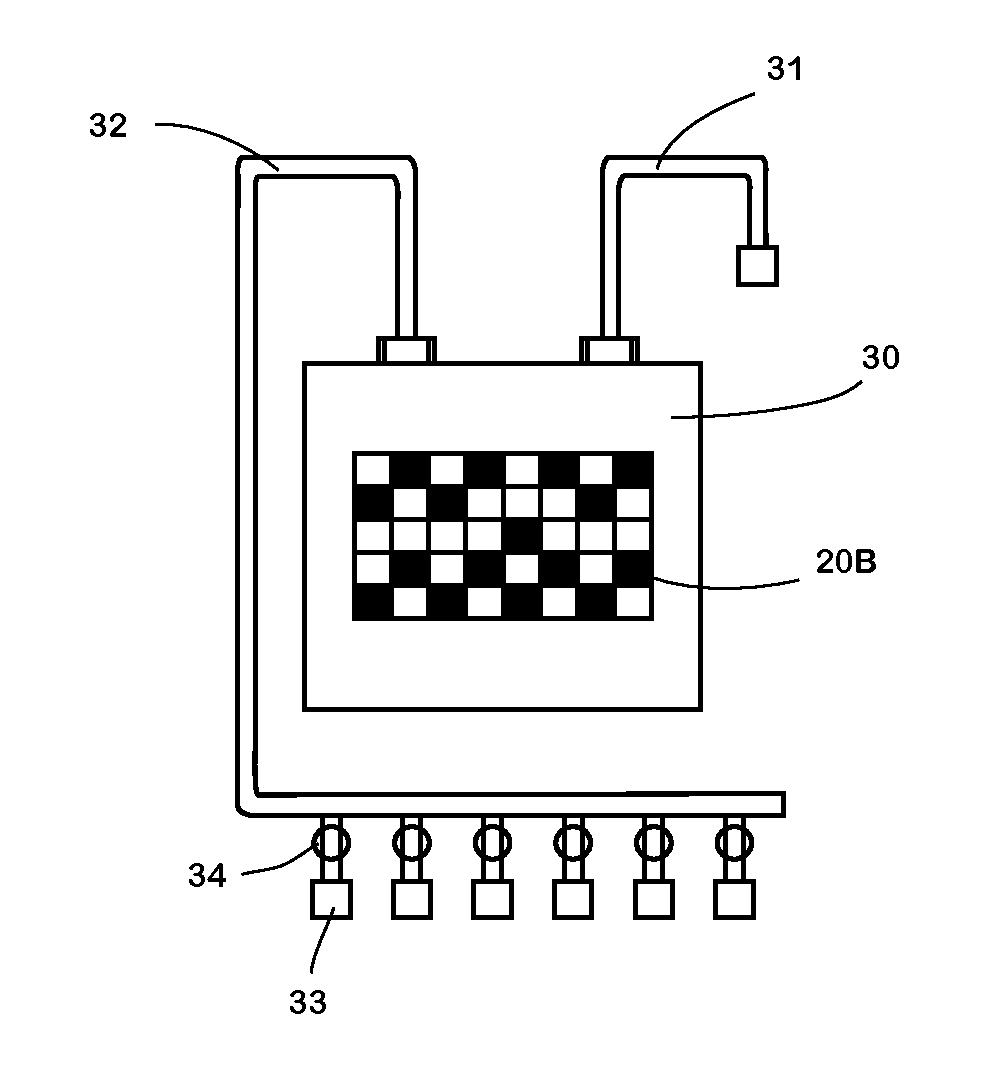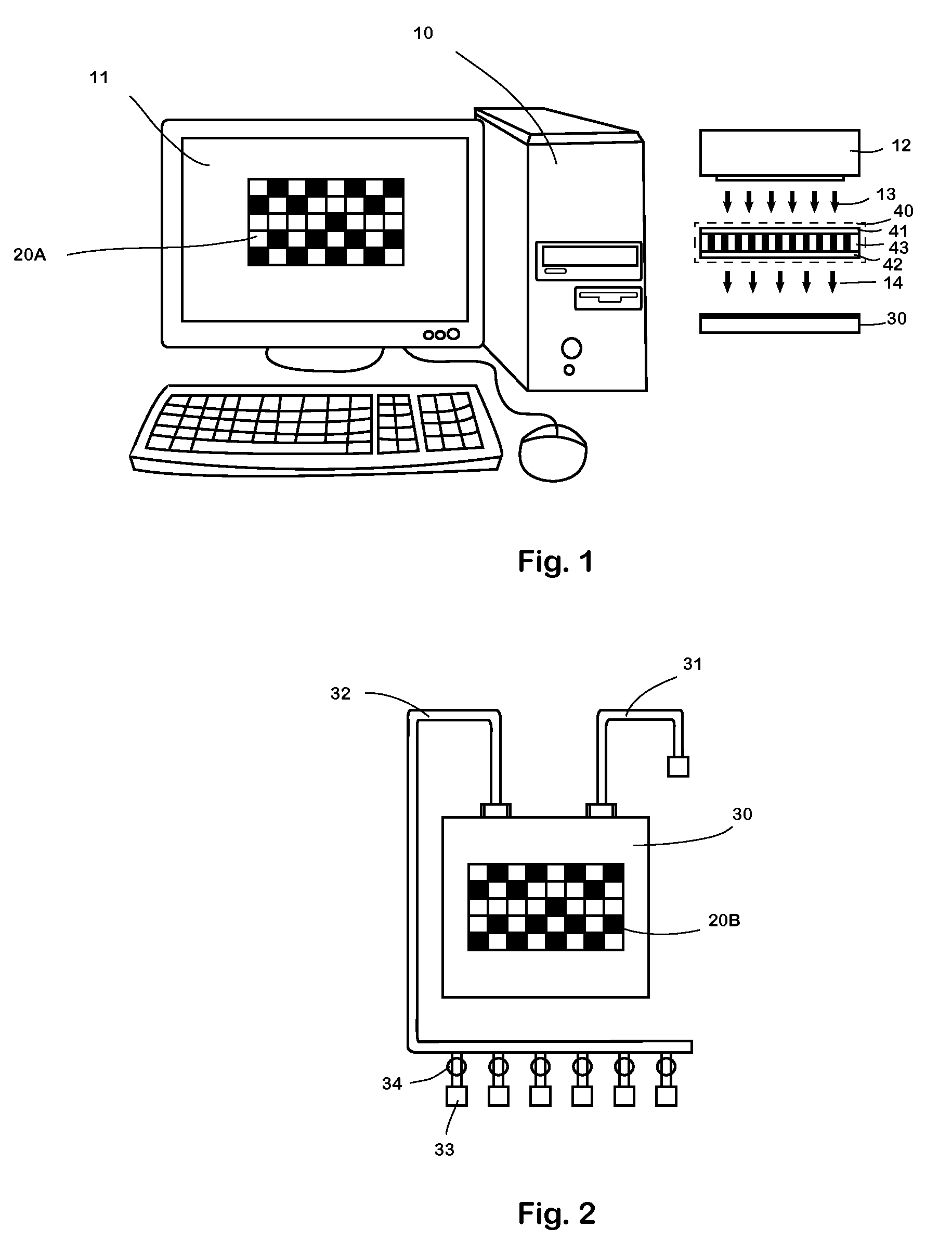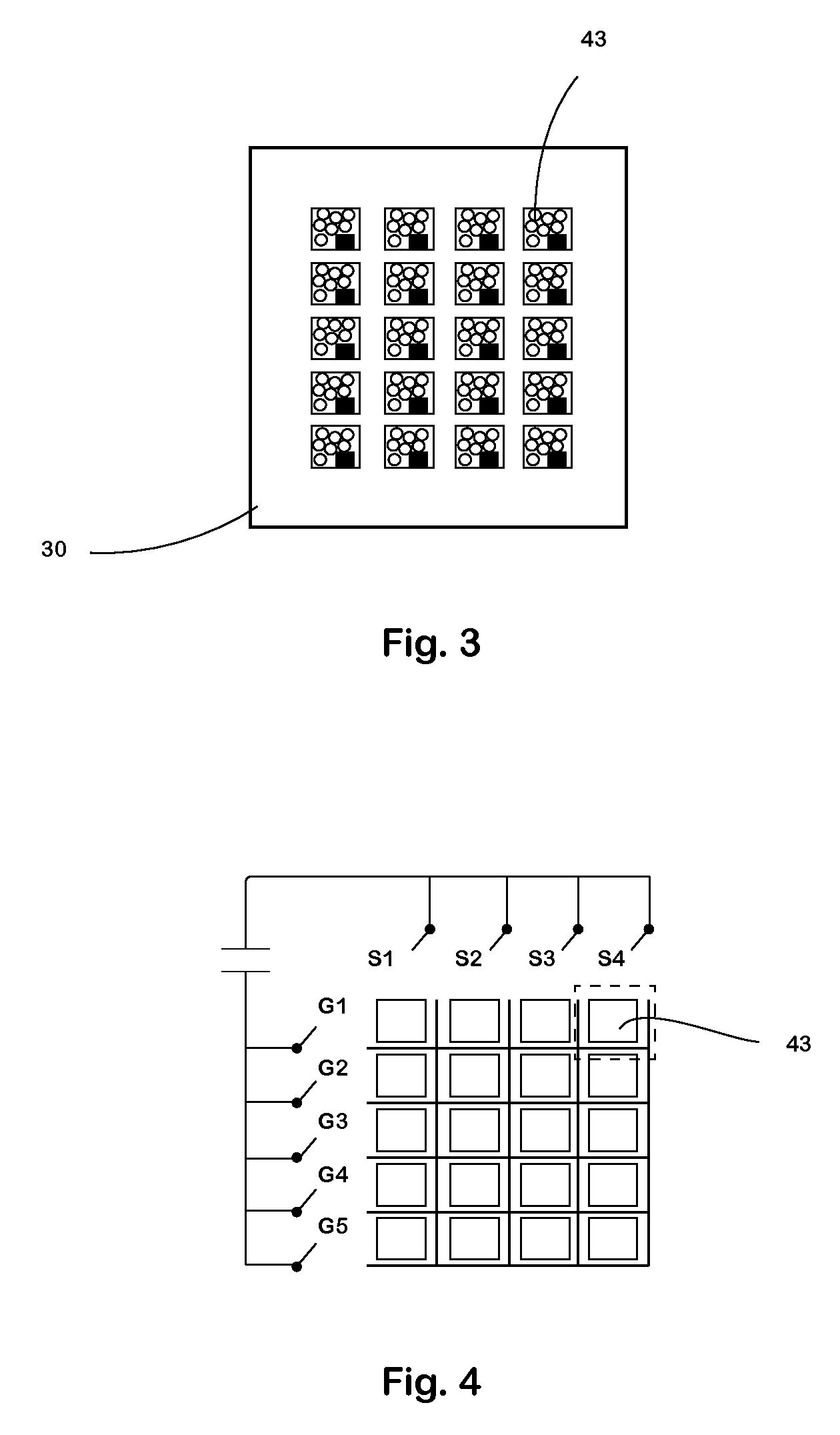Substrate patterning using a digital liquid crystal array
a liquid crystal array and substrate technology, applied in the field of substrate patterning of computer chips, can solve the problems of wasting time and cost for replacing a series of physical masks, and the inability of photolithographic masks to design reasonable costs to achieve the diversity of arrays, etc., to achieve the effect of saving time and cost, and reducing the cost of control
- Summary
- Abstract
- Description
- Claims
- Application Information
AI Technical Summary
Benefits of technology
Problems solved by technology
Method used
Image
Examples
Embodiment Construction
[0024]While the making and using of various embodiments of the present invention are discussed in detail below, it should be mentioned that the present invention provides many applicable inventive concepts which can be embodied in a wide variety of specific contexts. The specific embodiments discussed herein are merely illustrative of specific ways to make and use the invention.
[0025]The present invention uses digital light processing technology with optical deprotection photochemistry to create a system and method for generating digital optical chemistry high diversity arrays. With this invention, the limitations of the traditional mask-based photolithographic processes are overcome by eliminating the need for one or more masks. The present invention is also based on the recognition that digital light processing technology can be used to pattern photoresist for the fabrication of substrates, e.g., semiconductor substrates. The present invention thus overcomes the problem of manufac...
PUM
| Property | Measurement | Unit |
|---|---|---|
| transparent | aaaaa | aaaaa |
| shrink | aaaaa | aaaaa |
| semiconductor | aaaaa | aaaaa |
Abstract
Description
Claims
Application Information
 Login to View More
Login to View More - R&D
- Intellectual Property
- Life Sciences
- Materials
- Tech Scout
- Unparalleled Data Quality
- Higher Quality Content
- 60% Fewer Hallucinations
Browse by: Latest US Patents, China's latest patents, Technical Efficacy Thesaurus, Application Domain, Technology Topic, Popular Technical Reports.
© 2025 PatSnap. All rights reserved.Legal|Privacy policy|Modern Slavery Act Transparency Statement|Sitemap|About US| Contact US: help@patsnap.com



